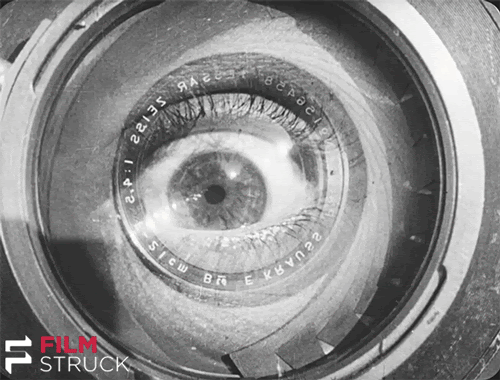-
See the Difference: Save $1,000 on LASIK , Find More
*Must mention this promotion and be treated before April 30 of 2025 to qualify. $1,000 off for both eyes on standard Wavelight price, $500 off for one eye. Cannot be combined with any other offers.
Anatomy of the Human Eye – Parts of the Eye Explained
Parts of the Eye Explained
From the moment your eyes open in the morning, to when you turn off the lights to sleep at night, your eyes are taking in information so you are aware of your surroundings at all times. How often do you take your eyesight for granted? The eyes play an essential role in everyday activities, even when you don’t know what makes the eyes work or how your eyes and brain are processing images.
Eyes: A Built-In Camera
Your eyes work in a similar way as a camera. Pictures are captured and sent to the brain, where the information is processed and categorized. As the light passes through your eye, it is picked up in the back area of the eye. Then, this picture is changed to a message that can be sent to a part of the brain which handles visual processing.
For this process to work, multiple parts of the eye need to be working together. In the same way that a camera will malfunction if the lens is blocked or a part is broken, your eyes need to have functional parts for your vision to be accurate and clear.

Parts of the Eye (And What They Do)
If you want to understand how various conditions and diseases affect the eye, then you need to know how the eyes work. Here is an overview of the many important parts within your eye and how they impact your vision:
- Orbit: The eye is located in a bony socket within the skull, known as an orbit. Six extraocular muscles are located in the orbit, which attaches to the eye to enable movement. The muscles allow you to look side-to-side, up and down, and rotate the eye.
- Sclera: The white, visible area of the eyeball is called the sclera. It is durable and acts as a protective layer, covering most of the eyeball surface. The extraocular muscles are attached to the sclera.
- Conjunctiva: A thin layer of tissue covers most of the front surface of your eye. The conjunctiva also acts as a lining inside of your eyelid. When the eyes look red, it means that the blood vessels within the conjunctiva are bigger than normal.
- Cornea: The front of the eye holds the cornea, which is like a glass lens that moves light into the eye. This clear part of the eye focuses the light so the image can reach the back of the eye. When you look closely at an eye, the cornea is the clear, bulging surface that forms the shape for the front of the eye.
- Lens: This part of the eye works along with the cornea to focus the light on the retina (located in the back of the eye). The lens can change shape by getting thicker or thinner to optimize the clarity of the picture as it hits the retina.
- Ciliary Muscles: Around the lens, a circle of small muscles works to change the shape of the lens. These muscles relax or squeeze depending on the distance of the object. For example, if you are looking at something up close, then the ciliary muscles make the lens fat by squeezing the lens. The muscles relax to thin the lens when you are focusing on distant objects.
- Retina: The retina is located in the back section of the eye and contains rods and cones, helping you distinguish between colors and black and white. This area of the eye is actually a group of light-sensing cells, collectively referred to as the retina. When the image you are seeing is in the retina, it is turned into an electrical message that is sent to the brain.
- Macula: Within the retina is a small, specialized area known as the macula. This part of the eye helps with central vision so you can see details in the various images.
- Optic Nerve: When the electrical messages are received in the retina, they are sent along the optic nerve to reach the brain.
- Vitreous Humor: In the space between the retina and lens, this area is filled with a transparent, jelly-like substance. It helps to maintain the shape of the eye and protect the structure of the eye.
- Iris: Every person has a unique eye color that can be seen in the middle of the eye. This pigmented area is known as the iris, and the color is inherited genetically. Not only is the iris beautiful, but it is also functional to control the amount of light that can enter into the eye.
- Pupil: In the center of the iris is the pupil, which is where the light enters in. When you are in a dark environment, the pupils get bigger to optimize your vision. In brighter environments, the pupils get smaller to manage the amount of light that comes inside. The diameter of the pupil usually ranges between 3 and 7 mm, depending on the light conditions.
- Eyelids: The skin covering that moves over the eye is important as a protective mechanism. Eyelids block the light when you are sleeping and have an instinctual mechanism to blink, so the eyes stay moisturized.
- Tear Glands: In the upper eyelid, small glands are there to provide the tears that keep the surface of the eyes moist and clean. This moisture is important for protecting your eye from damage.
- Eyelashes and Eyebrows: The lashes and brows around your eye work to block dust and sweat from getting in your eyes.
The different parts of the eye are all unique, but each is an important piece of a whole system to help you see.
How Eye Changes Affect Your Vision
As changes occur in one or more parts of the eye, it can have an impact on your vision. For example, when the curve of the cornea changes, it affects the way the light is reflected on the retina, which in turn makes it difficult to focus on the things that you are seeing. Other eye conditions can impact vision as well. Corrective lenses can be worn, such as glasses or contact lenses, which adjust the way the light enters the eye and hits the retina. Or, some people choose laser eye surgery to reshape the cornea.
If you are ready to get rid of your glasses and contacts, then contact us to learn more about the benefits of LASIK eye surgery. Our team at LasikPlus will discuss your options and help you find the right provider to assist with your eye care. Schedule an appointment online or call us at 1.866.755.2026.
YOU MIGHT ALSO LIKE...
VISION CENTERS NEAR ME
Enter your zip code, city, or a doctor name below to find a vision center.
Find out if LASIK is right for you
Congratulations!
Your vision issues can most likely be corrected with a LASIK procedure. Schedule a free consultation today.
Answer 5 simple questions to see if you are a candidate
What is your age group?
Do you wear...
With corrective lenses, do you have...
Have you ever been told that you have astigmatism?
Have you ever been told that you have dry eyes?
Request an Information Kit
Learn about your surgeon, the latest advanced technology, procedures, options and benefits, financing options, and what to expect from your LASIKPlus experience.









